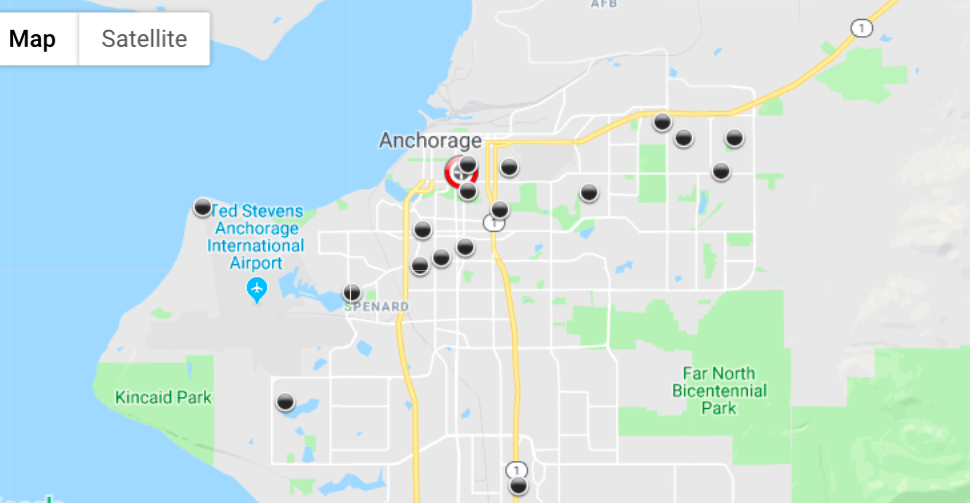SO SATISFYING, THIS BOOK WILL PROMPT YOU TO GET OFF THE SOFA
It’s not often I tuck a book into my satchel before heading to the airport. I tend to work when bouncing between Anchorage and Juneau. When the jet hits 30,000 feet, my computer is out and I’m at the office.
But this extreme outdoors memoir — Alaska Raw — had me hooked from the first page, as the author, Bob Lacher, takes off like lightning in the first chapter to describe a wild and wooly caribou hunt with his father, who was then in his 70s. After reading that chapter, I took the book with me on my recent trip to Juneau and Skagway. I’ve no regrets, except a faint sense that perhaps I’m not living wildly enough. This book will make you want to get outdoors and feel the edges of this unforgiving land of Alaska.
As the writer tells it, on this particular hunt the roles between father and son were finally reversed. Once upon a time, Lacher had trailed in his father’s exact footsteps, trying to not snap a twig or crunch some dry leaves during a hunt.
Now, decades later, his father was behind him, doing the same thing, walking in his exact footsteps. Many of us can relate, even if we’ve not high-stepped through a mushy tundra in the Aleutians that “looked like a field of four foot beach balls crammed together with a thin green blanket draped loosely over them.” The roles do reverse with our parents, if we’re lucky to keep them that long.
The story of stalking caribou on Unimak Island after flying the beaches of the Aleutians “beach combing” for walrus tusks with an older dad is a can’t-stop-reading way to enter the epic life of an Alaska big game hunter.
“This guy can write,” I thought, as I allowed my commitment to the book emerge, feeling the howling wind push against the tent as the pinned-down hunting party braced their backs against the inside wall in a “brand of tent made to hold up to just about any weather that anyone would want to camp in.”
It was on Page 19 that I came to the line that let me know I’d stick around to the end of this book:
“In some ways, and for reasons unknown, this is the stress some of us live for.”
Yes, that is so, for some of us.
Lacher is describing the anxiety of not knowing if his plane, a Super Cub, tied down outside the tent, would survive the force of that wind, and how he kept unzipping the tent to check on the status of things that he’d not be able to change regardless in that crazy wind storm. And yet, he was unable to avert his attention from the peril.
It also is an apt description of every adventure that follows in this approachable set of stories, where many an escapade started at about the fourth beer around the camp stove. “That is when we get down to the base elements regarding which Cro-Magnon itch really needs scratching.”
Alaska Raw is about flying the wild country and surviving. Snow machining the back country in search of prey. Stalking wild animals in the Brooks Range. It’s about hunting big game: The bull caribous, monster grizzlies, 100-pound wolves, wolverines and Dahl sheep.
I’m not a hunter, and never have been. I went hunting hare with my dad while a teenager in Juneau, but it was not my thing and we never even saw one on that expedition. My father and brothers brought home ducks and geese from the Mendenhall wetlands, but none of us sought the blacktail deer or big game. When I shoot, it’s a hand gun at the range. Hunting is not part of my background, and yet, the stories here are wildly entertaining even to a non hunter.
Although the center plates of the book have photo after photo of Lacher and his dead trophies, it’s not a turn-off if you’ve already read with curiosity about what it actually takes to bring down some of these animals. Skill, grit, confidence, dedication, and a sturdy constitution, to begin with. You begin to understand why the pictures matter.
And then you come to the final chapter: The Wrong Side of the Edge (2010), where Lacher writes for the first time about the fatal avalanche that took the life of two of his friends, and how he watched it happen and could do nothing to stop it.
“I could now see a massive wall of hurtling snow slabs, tumbling through clouds of explosively charged white mist eating up the distance. My mind struggled to measure it in fractions of seconds and know that it was going to bury me alive. Instinctively, I jerked the snowmobile hard left, downslope, putting all my weight and muscle into the lean and rolling up into a banking, full power turn in the deep powder snow.”
Lacher tells second by second what it was like to be in the path of the avalanche with Curtis Spencer, Eric Spitzer, Jim Bowles, and Al Gage. Neither Bowles nor Gage made it out alive. Spencer was miraculously spit out of the enormous slab that barreled down a Kenai Peninsula mountain in 2010.
It was the “stress that some of us live for” moment that left a permanent scar on the author, and caused him to rethink his life and take things in a different direction. The lifelong Alaskan left the corporate world that very year, after working for most of his adult life in the oil and gas industry in Alaska.
Lacher could have done more with that final chapter, described more fully the personalities of his companions and how they came to be in that fateful position. He scratches the surface of what must be a painful story to tell, but you almost need to know the full story from news accounts to understand the context of the tragedy.
“We all ask ourselves from time to time, what acts of ours should, in the end, accumulate to some satisfactory finish that memorializes the high water mark of our time here…Maybe the mark is no mark at all but only the satisfaction of rejecting a life lived looking through a keyhole constructed by the myths and memes of our time, a keyhole that divines order out of disorder in the minds of those who cannot live without it. Maybe it’s not about any high mark but all the white space in between, savoring the moments we live that are scrubbed of all pretense and insincerity. Among such moments are our experiences in the wilderness,” Lacher writes in his “Final Word” closing chapter. Indeed.
That is the kind of book it is: It’s wild, expansive, descriptive, funny, poignant, and at times profane, and it’s worth every minute you spend with it. Reading it will make you yearn to find that “edge” in your life and hopefully live through it.
Alaska Raw is available at Todd Communications, www.alaskabooksandcalendars.com. And at Amazon.











